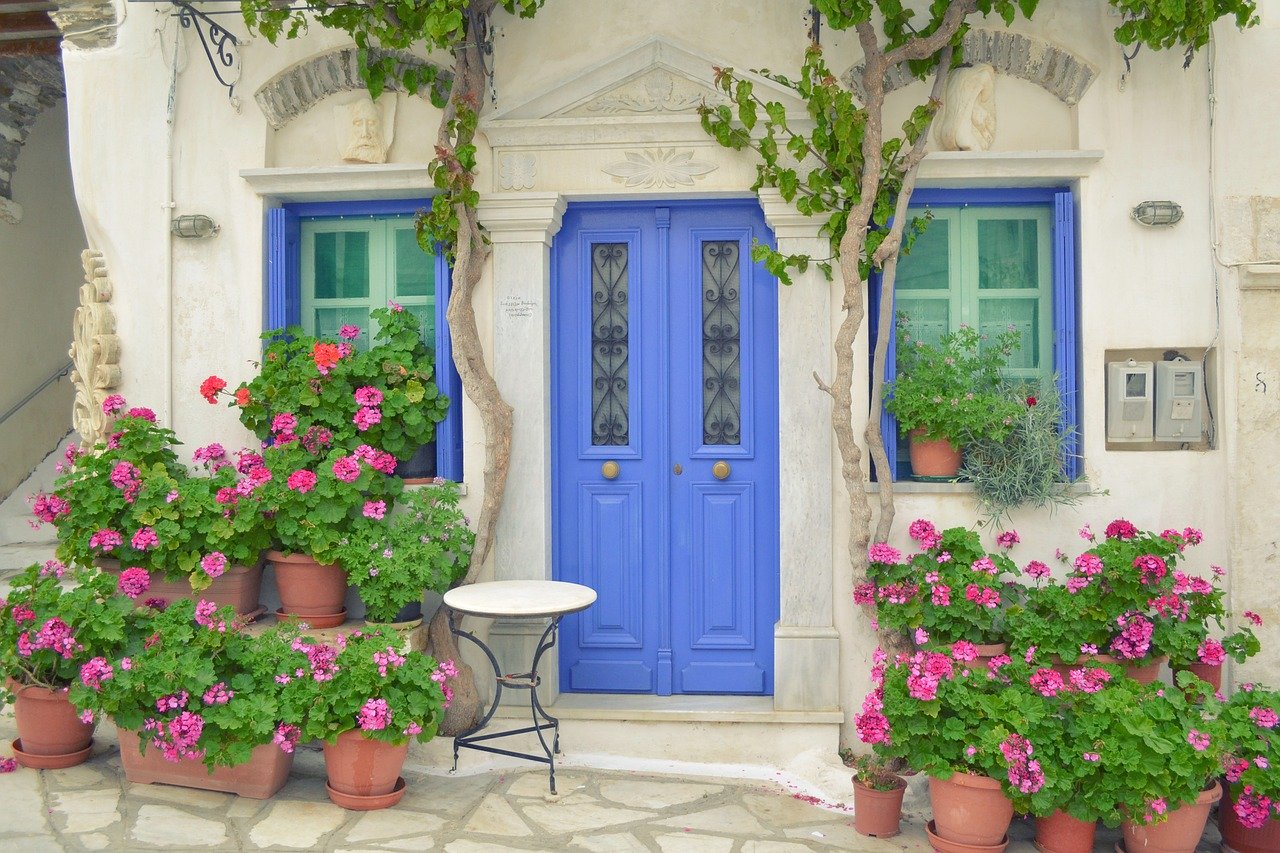
Don’t quit before the miracle… that’s exactly what a traveler feels not when they set foot on the Greek island of Tinos, but when they allow themselves after a few days to simply follow the heart.
The mind plays tricks on you half an hour before the ferry pulls into the port. It appears as though hundreds of the sun’s rays are bouncing against its sides as it glides through the deep blue waters of the Aegean Sea. For a minute, most travelers on board the boat to the Cycladic island of Tinos think its their eyes, the summer sun, that extra beer, or their playful minds just having fun.
But the persistent reflections on the vast “vapori” as it floats by the tiny seaside village of Ysternia on Tinos’ western side make us wonder. Minutes later, a sonorous boat horn announces one more arrival much like a greeting from the sea to the shore.
Mirrors, Reflections, & A Farewell from Ysternia

Tinos, as the majority of the Cyclades islands, has for generations seen its very best men sail off to sea as sailors and captains, or fishermen and sponge divers.
The playful reflections we see on our way to the Greek island are actually a gesture of farewell by the residents of Ysternia who would use mirrors back then to extend their final goodbyes to their loved ones as they set off.
With a tiny mirror in hand, those departing and those staying behind would reflect back and forth to keep in touch until the ferry faded away into the distance.
We experienced a more contemporary take on the custom. About half an hour after the boat set sail from the port, as it passed in front of the Ysternia, villagers – now friends – still use their mirrors to say goodbye.
In the olden days, the arrival of the ferry – the “vapori” – was reason for celebration. It meant foodstuffs and treats from loved ones in Athens and Piraeus were on their way.
The boat also ‘held’ tourists within its vast ‘belly’, their strange habits, a fresh perspective, and, of course, extra pocket money. But most importantly, it brought with it change; a hustle and bustle that would interrupt the relaxed and often unbearable slow pace of island life and offer a long-awaited distraction. Finally! The boat is here!
Book your ferry tickets to Tinos fast and easy
The August 15 Traveler to Tinos
And though this very much still describes the Greek island to this day, there is one ship load of passengers that is different: the one rolling into Tinos’ harbor very early in the morning of August 15.
August 15 is no ordinary day for the Greeks and a closer look will reveal that these are not your usual tourists. As the ship’s massive flap door drops open, swarms of these odd travelers, many still wearing black, others dragging sick children, some in wheelchairs, others barely standing canes in hand, emerge in a thrust.
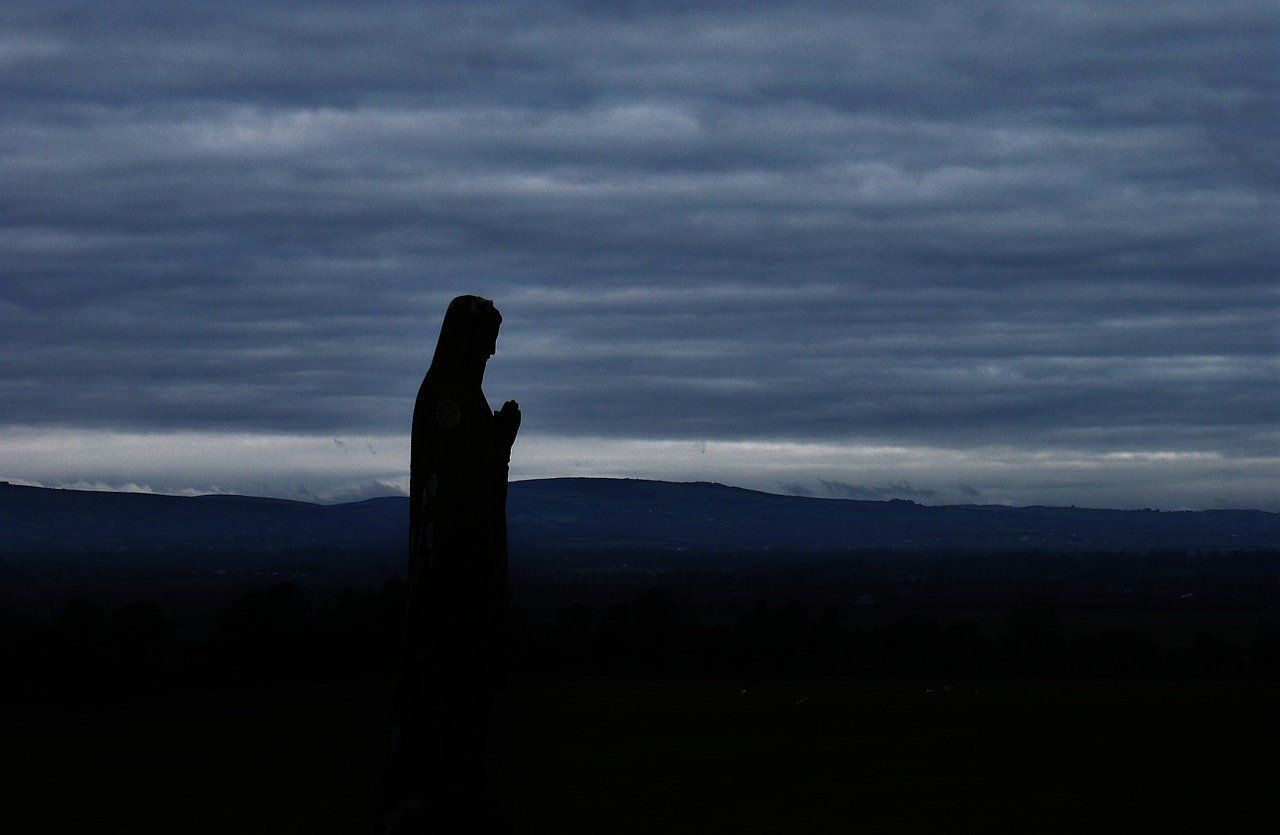
Among the hoards, the diehard disciples down on their knees, one behind the other, taking their place on a velvet-coloured carpet that runs along the portside and spirals through town up the main road to the Panagia of Tinos (Virgin Mary).
This Panagia is not like the hundreds of others found across Greece dedicated to all sorts of things. This Panagia is the Miracle Worker – the “Panagia tis Tinou”, who for centuries has been performing countless miracles.
Since 1823 when Her icon was discovered, the Panagia of Tinos has healed, found, saved, empowered, inspired, enlightened thousands who have come here seeking a miracle.
Yes, there will be those reading this who will laugh and cynically think that miracles do not exist. And truly they don’t for those who do not believe. But for those who do, the Virgin Mary of Tinos is vivid proof that where there is faith, there is hope, and where there is hope life goes on whatever the circumstances.
On August 15, the grandest celebration in Greece after Orthodox Easter, feasts are held across the country, from the grandest church to the tiniest chapel commemorating the Dormition of the Virgin Mary or the “Koimisis tis Theotokou”, which means Her “falling asleep” and ascending into heaven.
Worldwide, Orthodox Christians venerate the Holy Mother. But on Tinos, this day has an added meaning, as it is here on this Greek island in the soil below the huge marble church that Her icon was found.
►What Greeks Do on Orthodox Easter
The Tales of Tinos’ Virgin Mary
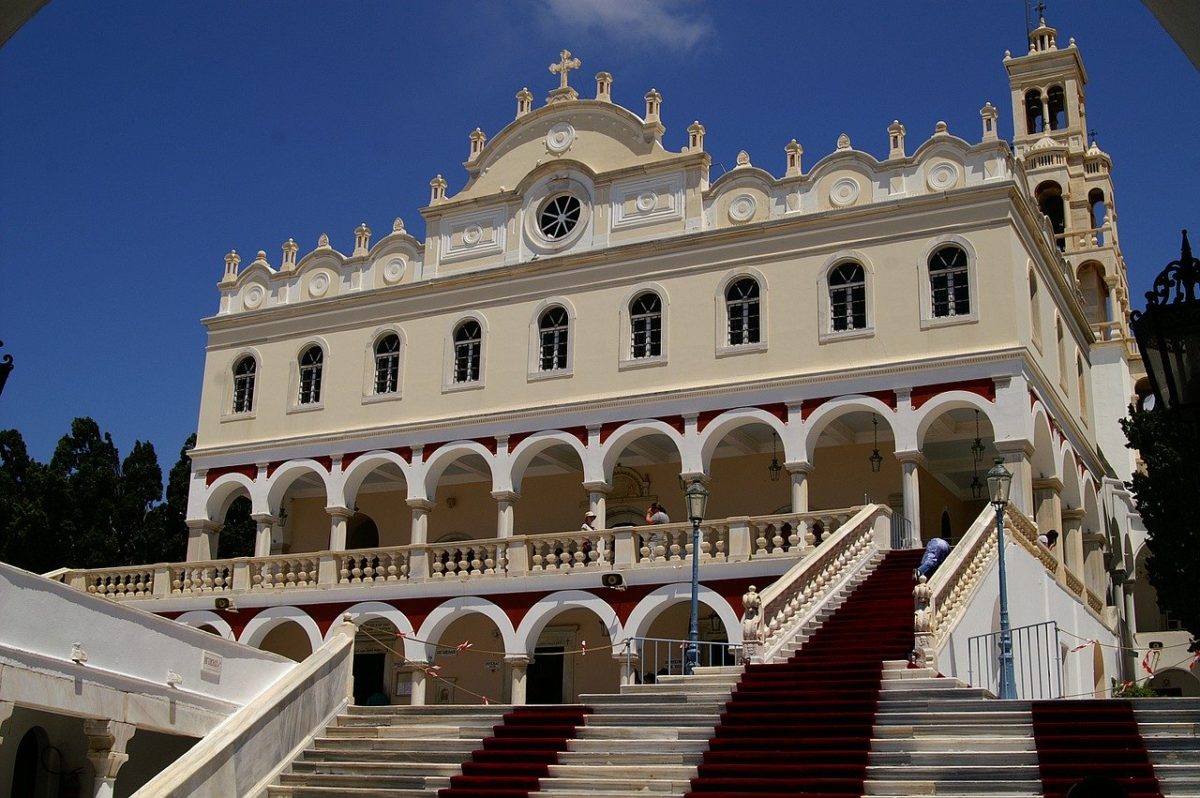
The grand church to the Panagia was not built at this location by chance. In 1822, the Virgin appeared in vision to a nun named Agia Pelagia from the “Our Lady of Angels” (Kyra ton Aggelon) monastery in the village of Kechrovouni.
Legend has it, that She summoned Sister Pelagia to notify the authorities of the exact location of the icon so that excavation works could begin. At first, Pelagia was hesitant but the Virgin visited her in her dreams again and so it was done.
Workers dug day in day out but no icon was found. Instead, the ruins of an ancient temple to Dionysus, the god of wine, came to light. Over and over, the digging stopped and started accompanied by disappointment and disbelief.
This changed on the morning of January 30, 1823. The icon, in two parts, burnt and covered in soil came to the surface. The Panagia was found in the yard of Tinian Antonis Doxaras. This was the miracle everyone had been waiting for. The news spread like wildfire across Greece, which was still under Ottoman occupation and amid the ongoing struggle against 400 years of slavery. In those trying times, it was seen as a divine sign.
Immediately, the villagers set out to build a church in Her honor on the spot where the icon was found. At the same time, the leaders of Greek Independence hurried to the island to worship the icon and receive Her blessing. Works on the church were completed in 1880 with marble brought in from the neighboring and sacred islet of Delos opposite Mykonos.
Panagia tis Tinou: The Miracle Worker
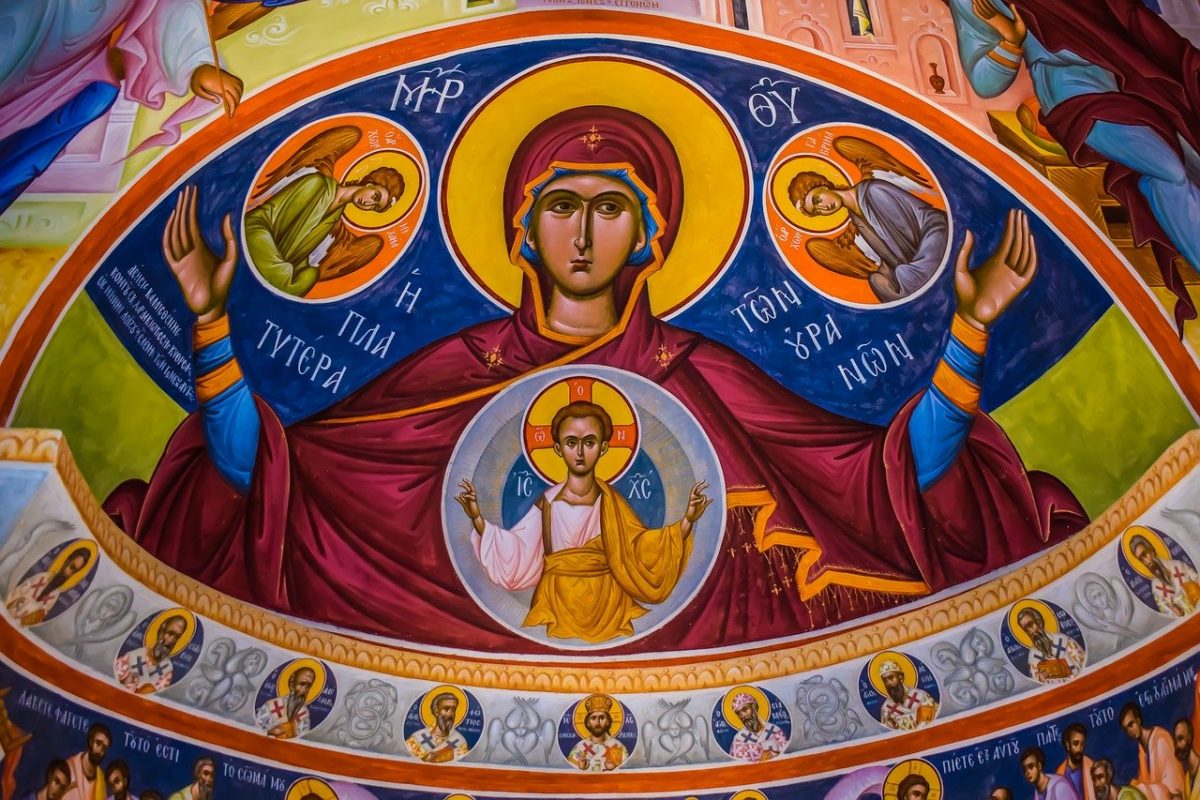
Come August 15, Tinos’ chapels, the main church, the surrounding roads, and the island homes are elaborately decorated. Paved in white marble, the central avenue leading up to the church named “Megalocharis” (The Gift Giving) is teeming with people; the pious stand patiently in line to worship the miraculous icon. Beside them, kneeling believers who have crawled their way up to the church as a “tama” (a sign of devotion) to the Virgin in return for Her miracle.
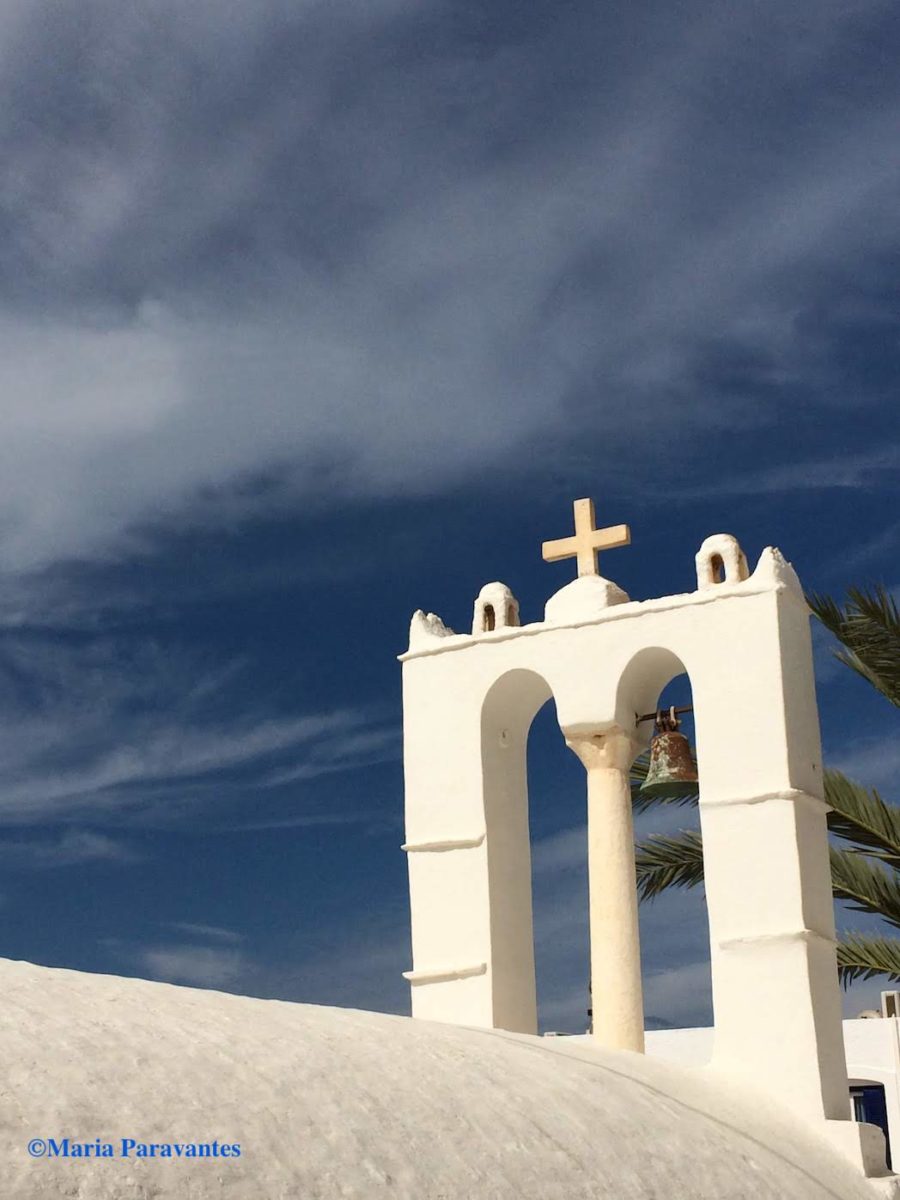
The Medieval Greek word “tama” derives from the ancient Greek verb “tasso”, which means to “vow or promise” to a higher power in return for their intervention. On either side of the main thoroughfare, pocket-sized shops are overflowing with dangling tokens and votive candles in every size and shape imaginable. Worshippers stop here to choose the “tama” and candle that best demonstrates their requests.
Looking up from the red carpet to the end of the staircase which leads to the main entrance of the church there on your left, barely visible under the dedications (“tamata”) you will see the unassuming icon.
You can hardly see the Virgin amid the hundreds of votive offerings ’embracing’ Her figure. Large and small, crafted of gold, silver, bronze, wood; displaying arms, legs, eyes or any other failing human organ that needs a miracle to be healed… like the often suffering heart; some complete art works, others plain, a few kitsch… all humbly asking the Virgin to work Her wonder.
The devout come to Tinos from across the land. Even Diaspora Greeks make a pilgrimage during their summer visit to the homeland. They ask of Her Holiness to cure them. In the past they would call on Her to help find a long lost relative (usually sailors), to offer guidance, give them courage and strength to survive life “stay Xena” (in the foreign land), or simply to thank Her for answering their prayers with inspired offerings, some true works of art.
►Greece’s Fanouropita: A Cake to Help you Find Lost Items?
An Orange Tree on 1st Sight
One such gift of gratitude is a gold orange tree one sees on entering the church. It is said that the man who crafted this masterpiece in the Panagia’s honor was blind. The Virgin answered his prayers and in return he thanked Her with an exquisite orange tree made of gold because it was the first thing he saw upon gaining his eyesight.
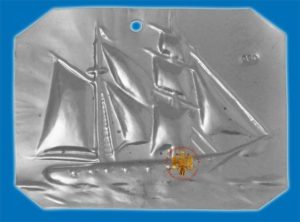
Many of the votives are located in a specially created museum in the large courtyard of the church. In the museum you will also see the medals of Greek Olympic champions weight lifter Pyrros Dimas and wrestler Stelios Miyiakis who dedicated their success to the Panagia.
Besides serving as a church, the Panagia of Tinos – The Holy Foundation of the Evaggelistria, established in 1825, is a self-governed and self-funded charitable institution. Thanks to the thousands of dedications, contributions, and donations, the foundation is active in charity, education, scholarship, and welfare and is run by a committee of Orthodox Tinians, presided over by the Metropolitan Bishop of the Cyclades.
Tinos the Travel Experience
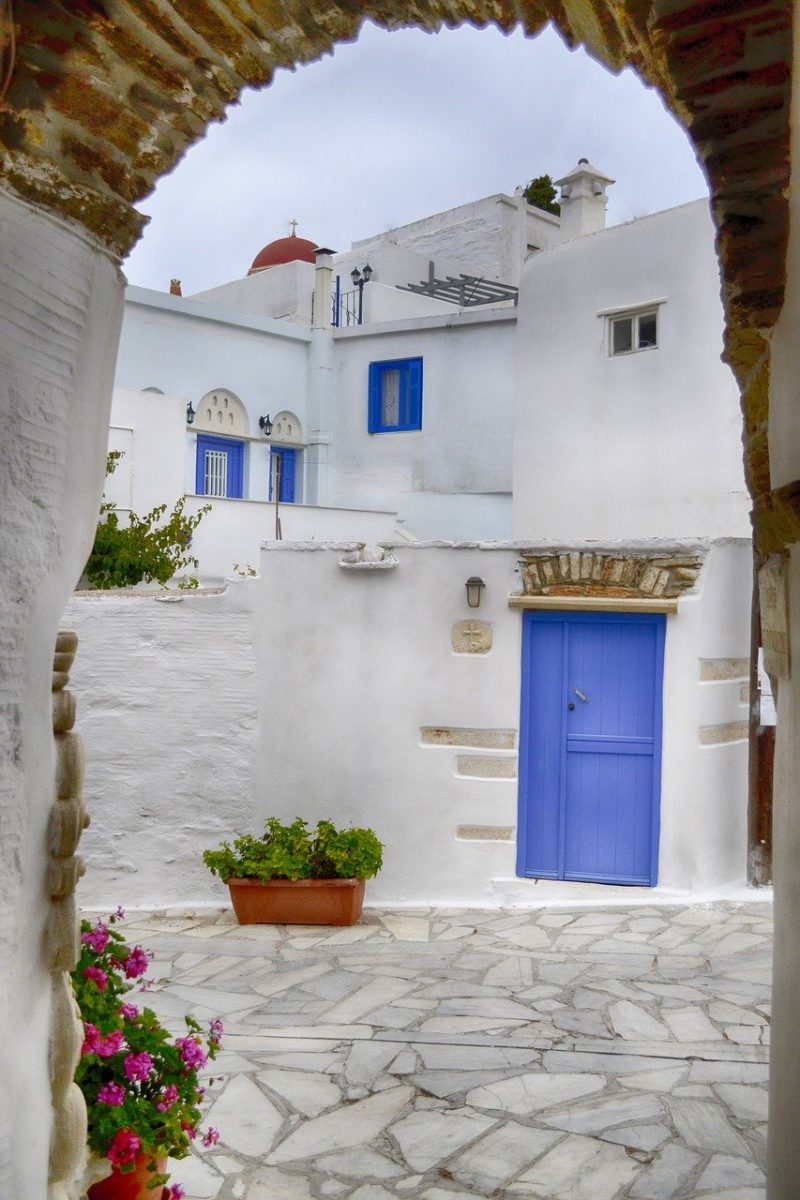
The Cycladic island of Tinos is in my view one of the most exciting places to visit while in Greece. Besides well-preserved villages in traditional Cycladic architectural style, Tinos boasts beaches for all tastes. Whether you’re seeking powder white sand, colorful pebbles, flat stones, deep or shallow waters, Tinos has a beach for you.
Tinos is also an ideal destination for the eclectic art lover. It is here on this island that some of Greece’s most talented sculptors were born, among them Giannoulis Chalepas.
Tinos has a long standing tradition of marble mastery, which has been recognized by UNESCO as a unique form of intangible cultural heritage (2015). So you will find some of the finest galleries and museums, as well the school of the fine arts.
Furthermore, together with the island of Syros, Tinos is home to a large Catholic community complete with chapels, schools and pastors and traditions.
On the road again…
Ferries to Tinos depart daily from the ports of Rafina, Piraeus, or Lavrio. The trip is about three to five hours depending on the ferry service. Visit Tinos in June or September or during Orthodox Easter.
► What to See & Do in Lavrion: Attica’s Best Kept Secret
✓ Settle down…
There is now a wide choice of accommodation available on Tinos. Select any of the island’s seaside spots such as Agios Romanos, Agios Sostis, Agios Fokas, and Agios Yiannis Porto. But also its picturesque mainland villages including Ysternia.
✓ Indulge in …
“Tyraki” cheese, “louza” ham, baby artichokes with eggs (“froutalia”), sun dried tomatoes, and tomato fritters (“tomatokeftedes”), “kopanisti” cheese spread with tomato or figs, and any dish with capers, and of course, fresh fish. Tinos is also known for its meat dishes. For the sweet tooth: sweet cheese pies, fritters with thyme honey, “amygdalota” (Greek macaroons), Tinos’ famed “pasteli” (sesame and honey bar) wrapped in lemon tree leaves.
►12+1 Greek Food Products You Must Try
✓ Don’t forget to buy…
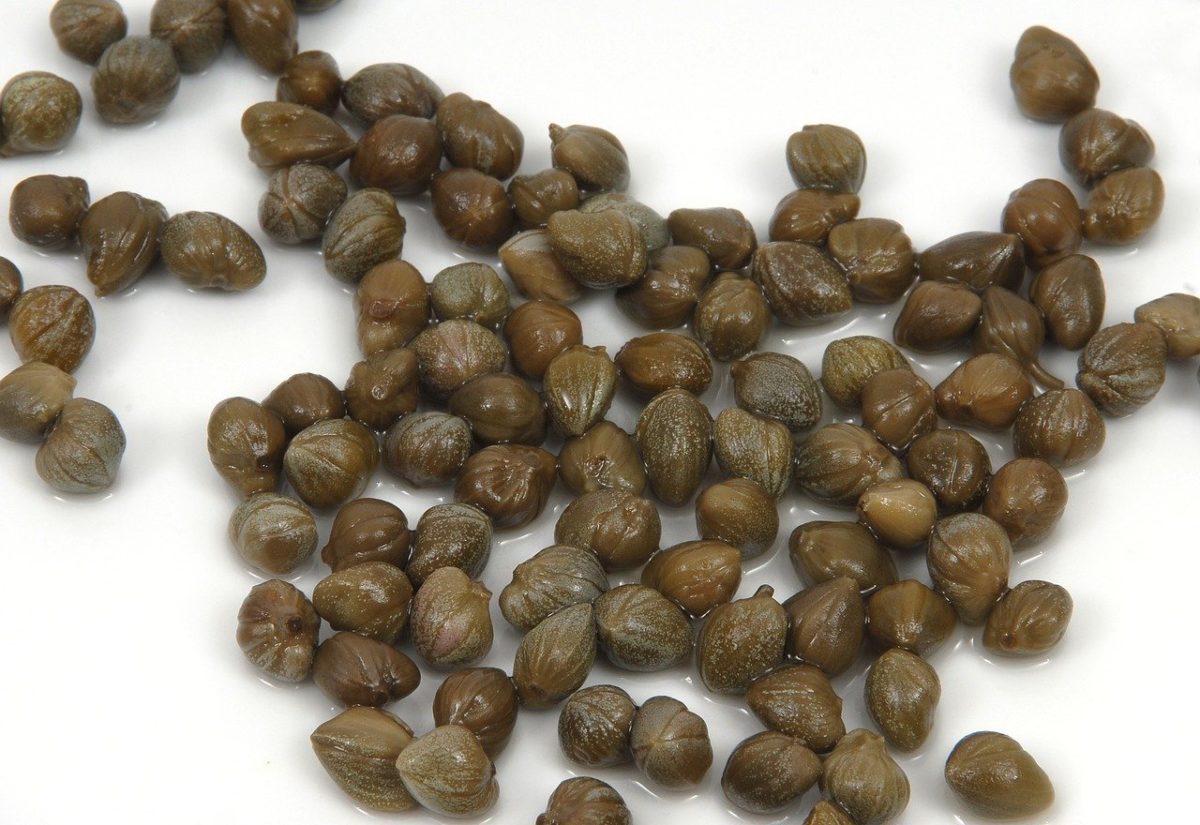
Tinos’ famed “kapari” (learn more here about the island’s wonderful capers), baby artichokes, sun dried tomatoes, “kopanisti” cheese, “louza” ham, “pasteli”, handmade baskets from the village of Volakas, and amygdalota from the award-winning Halaris – absolute bliss. Also buy from local producers who sell in the open-air market (“laiki”) in Tinos town. Ask for directions.
✓ Truth or dare…
Make sure to get the Tinos taste experience guided by a team of dedicated foodies and experts at Tinos Food Paths, go to at least one “panigyri” – open-air fair held usually in the church courtyard or central square with traditional instrumentalists, plenty of song, island dance, food and wine, and of course don’t miss the annual Tinos oregano and honey festivals .
► Greek Honey: A Divine Gift of Health
✓ Greek Culture tip
In the 15 days to August 15, Greek islanders traditionally white wash their homes and the same applies to churches dedicated to the Panagia across Greece. In the run-up to the holiday, Greeks wish each other “Kali Panagia“, which means may the Virgin be (good) with You.
💡Tip | Quick Links to Plan Your Holidays on Tinos
- Find a great place to stay in Tinos Athens and the best deals
- Book your ferry tickets for the Greek islands fast and easy.
- You’ll definitely need a car on Tinos so rent from the folks who do it best.
- Plan fun things to do on Tinos with the experts. This is definitely my all-time favorite and a must for foodies
♬ I conclude today’s post with one of the greatest and highest-selling albums of all time with Greek Cyclades island songs perfomed by Paros islander Yiannis Parios who turns to the Virgin Mary for help in matter of the heart. Enjoy!.
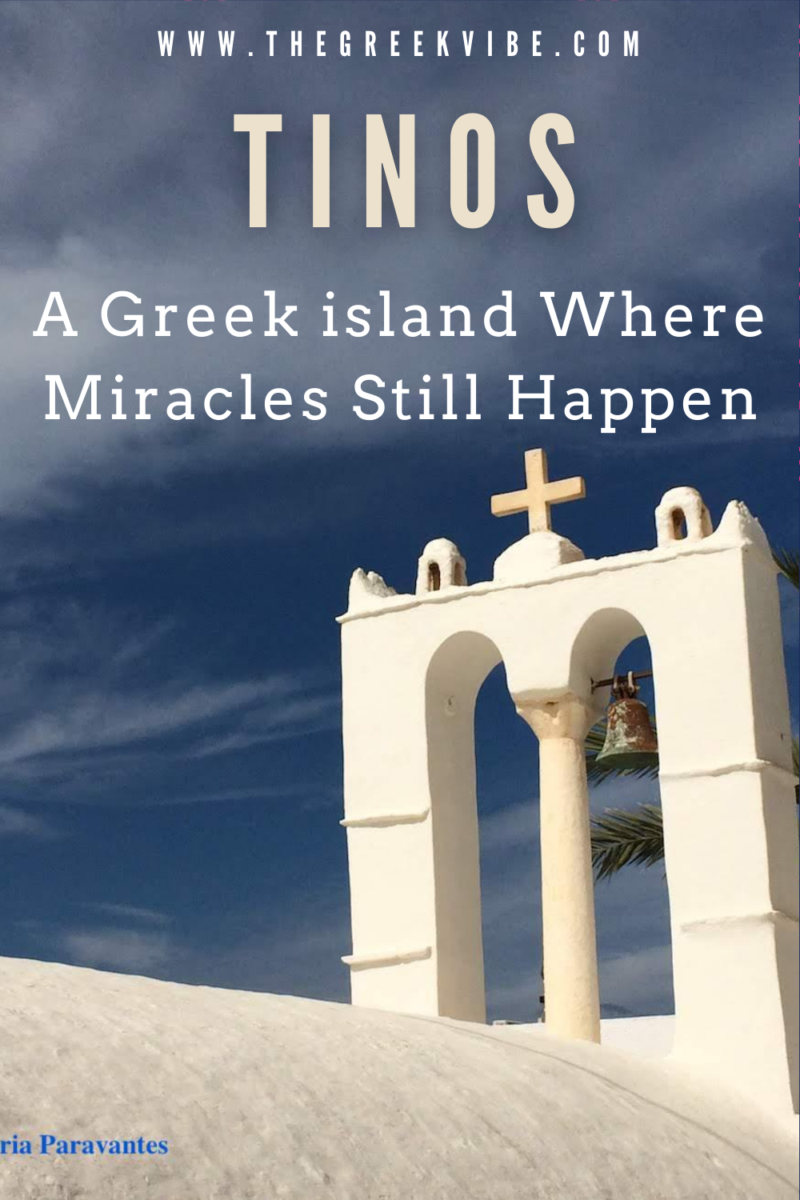

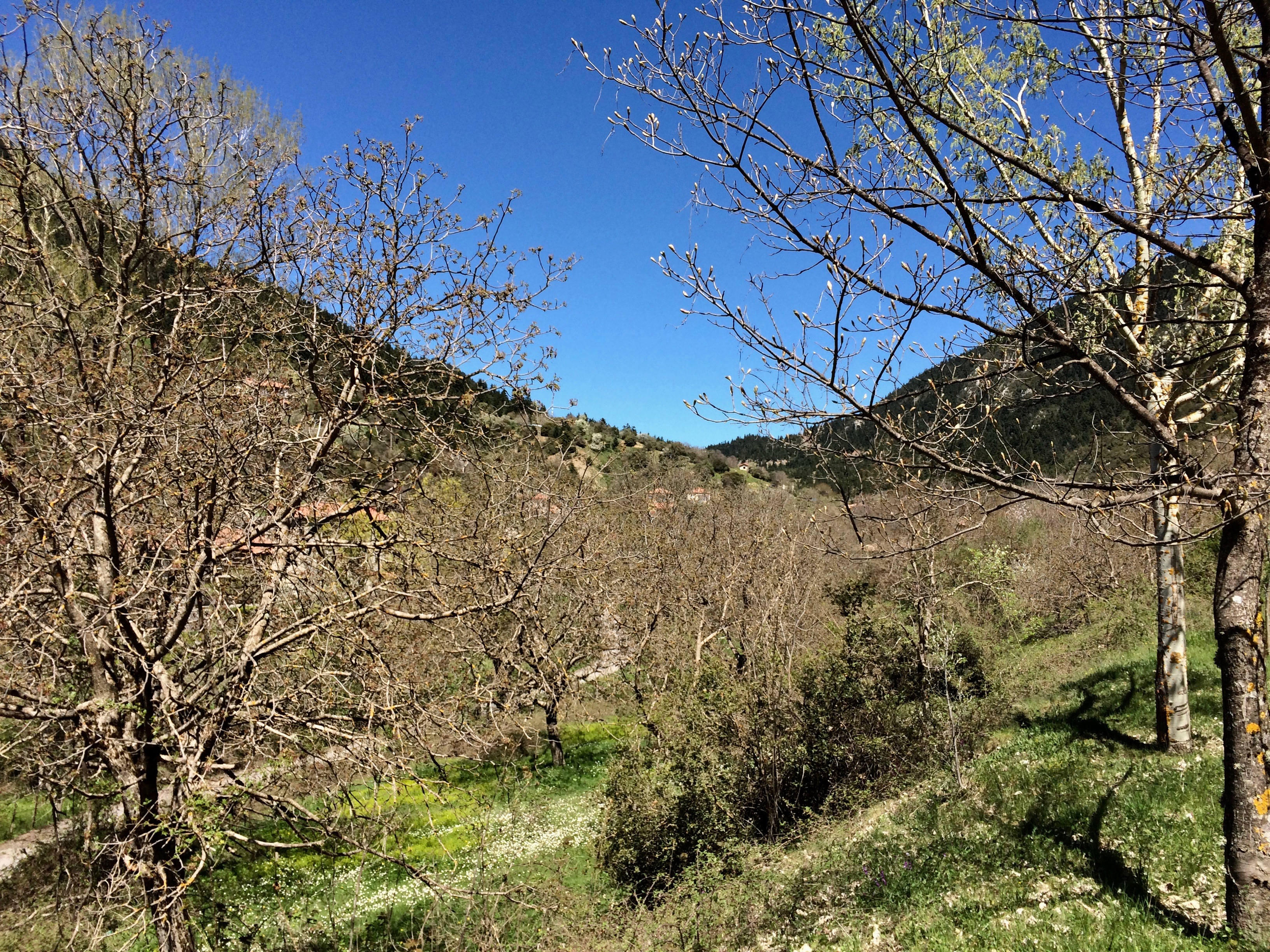
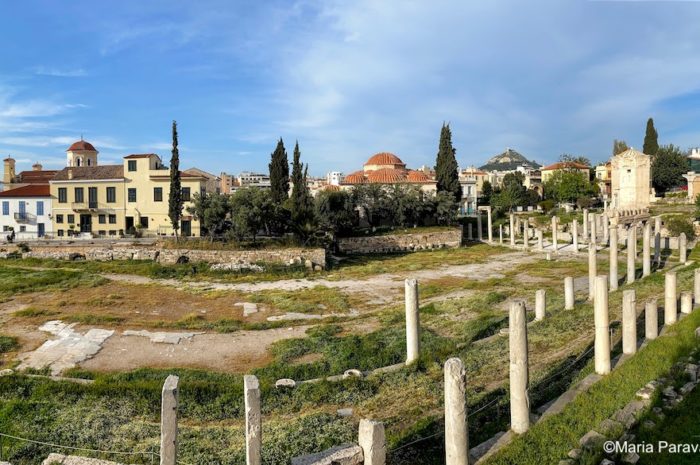

Can you visit Tinos or at least a part of it without driving?
Hi, Barbara. The truth is, if you really want to see Tinos, you will need to either rent a car (preferably, not a motorbike due to winds), or ride the bus. It’s a very large and diverse island that has so much to offer it would be a pity not to visit the villages and the beaches.
Tinos is amazing. A true Greek homeland. A true Greek experience. Pure, rustic, yet refined. Not a tourist trap. Wild/raw beaches. Excellent food. The landscape and scenery are as they would have looked hundreds of years ago. I’ve been going for nearly 30 years (not every year unfortunately) and always meet new people, see new things, visit new beaches and experience something for the first time.
Tinos is one of Greece’s well-kept secrets, especially its foods and products, not to mention that it is home to a large Catholic community. A treasure to be discovered.
Wow this looks so beautiful it looks like mamma Mia or something!
And there is much more beauty to be discovered in Tinos villages, which are wonderfully well preserved, not to mention the food, the beaches, and the traditional outdoor festivals.
Wow this sounds like such an amazing island to visit! Thanks for bringing it to my attention.
It is an amazing island Krista, with lots of aspects to discover, for all tastes, and very well preserved too.
Tinos sounds like the perfect greek island 🙂 can’t wait to go there one day!
Tinos is among the Cyclades islands that offers a very wide array of choices and options: everything from culture and food to beaches and religion. It is truly beautiful and worth the visit if you make it to Greece.